How to Validate a Bioburden Analysis on a Medical Device (MD)?
When a new MD (Medical Device) arrives at a microbiological quality control laboratory, the first step is to validate the conditions of the bioburden analysis.
The goal of this “validation” is to define a reliable protocol that will then be applied during routine Bioburden tests.
Here is a simplified summary, SuperMicrobiologists style, of the method described in ISO 11737-1 (Determination of a population of microorganisms on products)… Note that in the standard, the medical device (MD) is referred to as a “product”.
Best QC strains
Pharma : The best QC Strain suppliers
We polled the SuperMicrobiologists.
Here are their favorite QC Strains
Step 1: Calculation of the Correction Coefficient
When analyzing the bioburden of a medical device, it is challenging to recover 100% of the microorganisms present on the MD.
To obtain a reliable result, a correction coefficient is applied to the bioburden result.
The objective of this validation is to determine an extraction protocol for microorganisms and a correction factor for each MD family.
For this validation step, the MD is artificially contaminated with between 1à and 100 CFU (colony-forming units) of Bacillus atrophaeus in spore form. The device then undergoes an extraction protocol to recover as many Bacillus spores as possible (ideally 100 CFU).
General Protocol:
- The MD is immersed in a eluent (Buffered Peptone Water or equivalent, optionally with Tween and neutralizers).
- It undergoes various mechanical actions (ultrasonic bath, shaker, paddle mixer, etc.). Almost any method is valid to recover the microorganisms!
- The extract is then filtered, and the filter is placed on a culture medium.
- The ratio between the theoretically deposited quantity and the quantity counted on agar allows for the calculation of the correction coefficient.
This step is repeated three times minimum.
The value obtained for each test is compared to the inoculation control (100 CFU spread over 2 agar plates).
Example : If we obtain 90 CFU for the MD and 100 for the control, the recovery percentage is 90%. This is done for the other two tests, and then the average of the three tests is calculated.
If the average of the three tests is 75%, the correction factor is 100/75 = 1.33.
All routine results will therefore be multiplied by 1.33.
A correction factor greater than 2 is not really acceptable. If this is the case, it is recommended to implement changes in the extraction protocol to optimize this factor.
The cost/risk ratio must also be considered to determine how far we decide to optimize the tests.
How to Calculate a Correction Coefficient if the MD is “Naturally” Contaminated?
In this case, there is no spiking. Several successive extractions are performed. All the results are added together and compared with the result of the first extraction, allowing the calculation of the correction coefficient.
This is repeated three times, and the same calculation as previously is done.
Step 2: Control of Inhibitory Effects
The objective here is to verify if the MD has a negative impact on the growth of microorganisms.
The MD is put in contact with one of five strains (3 bacteria, 1 yeast, and 1 mold) at a known concentration (<100 CFU). The protocol established in step 1 is applied.
After filtration and incubation of the culture media, the goal is to recover between 50% and 200% of the microorganisms (compared to a positive control).
If less than 50% is recovered, the MD has an inhibitory effect, and it will be necessary to neutralize these inhibitors (for example, using neutralizers).
Step 3: Measurement of Stress Effect
This protocol verifies if the stress caused by the extraction protocol impacts the result.
For this, the diluent is artificially contaminated with different strains (<100 CFU), and it undergoes all the extraction steps (without the MD).
As in step 2, the goal is also to recover between 50% and 200% of the microorganisms.
Step 4: Identification of Contaminants
The identification of the flora naturally present on the medical device (MD) will help determine the culture conditions for routine analyses.
For this step, a medium that supports the growth of total aerobic flora, a medium for the growth of yeasts and molds, and optionally one for anaerobic flora is used. Sporulated forms can also be detected by applying a heat shock to the extract before filtration.
The MDs (cleaned, but non-sterile) are subjected to the extraction protocol. After incubation at the appropriate temperatures and times, all germs found on the agars are identified. This allows the determination of the nature of the contaminating flora.
These results help determine the media and culture conditions to be used for bioburden analyses.
Now you know much more about the protocol for validating a bioburden analysis of a Medical Device… What do you think?
We wish to thank Geoffrey Chaigne and Philippe Chabeaud for their testimonials.

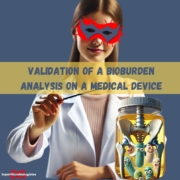
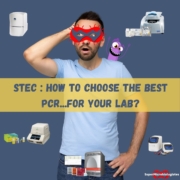
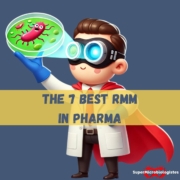
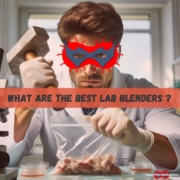

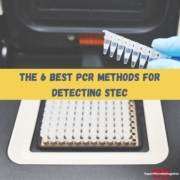


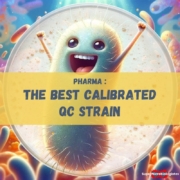







Trackbacks & Pingbacks
[…] The validation of the biocharge test conditions for an MD is quite interesting. We even wrote an art…. […]
Leave a Reply
Want to join the discussion?Feel free to contribute!